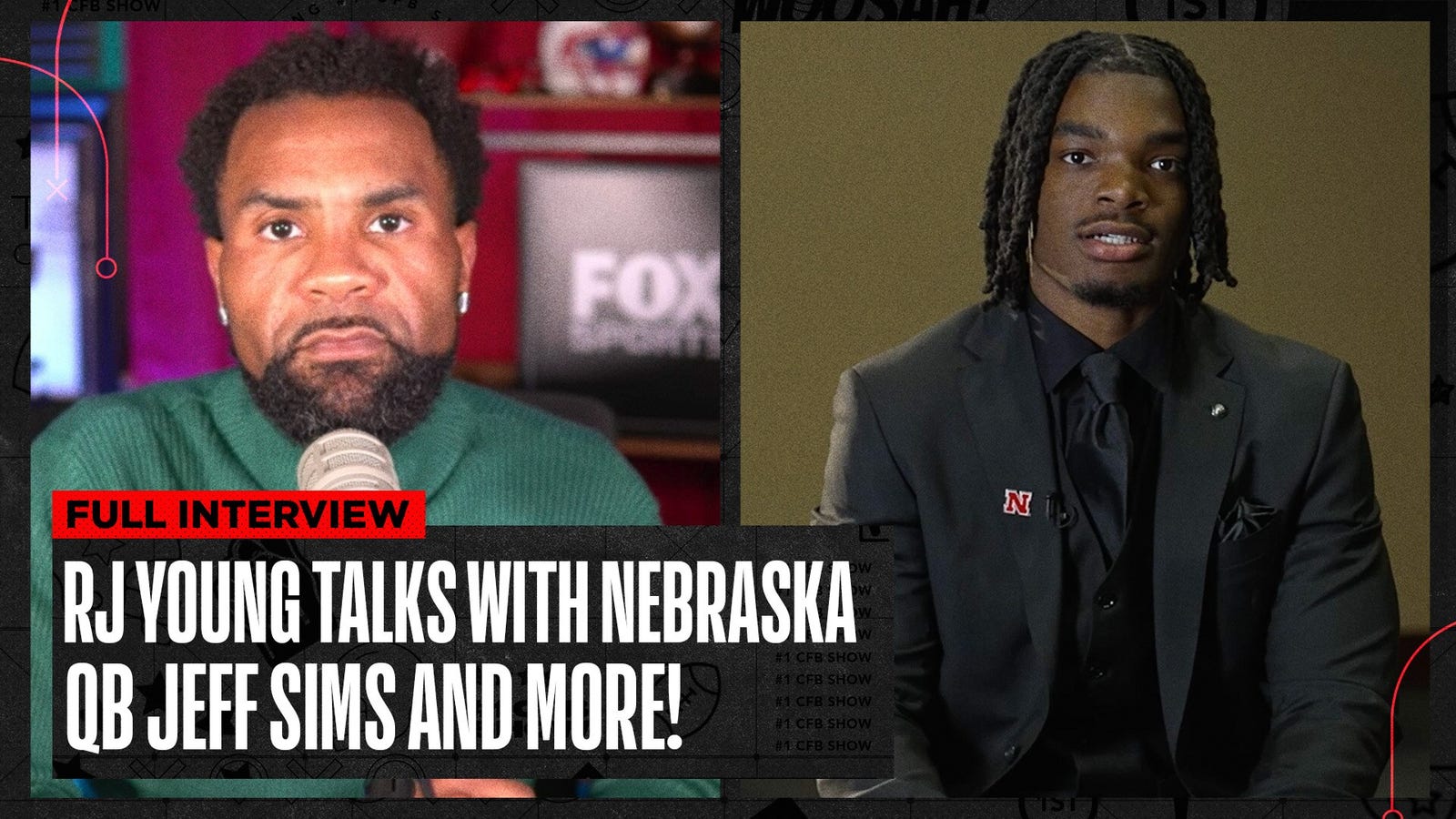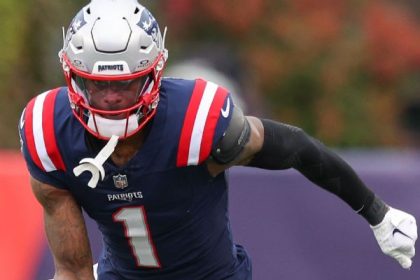Editor’s note: Michael Cohen traveled to Penn State this past summer to find out what James Franklin has done over the years to build his program into a Big Ten and national title contender. As the Nittany Lions are now 6-0 and ranked No. 7 in the nation heading into Saturday’s “Big Noon Kickoff” matchup at No. 3 Ohio State, now is a great time to go back and read this story, which was originally published in August.
STATE COLLEGE, Pa. — The television camera shuddered and shook as the broadcast cut to James Franklin, a football coach ringed by delirium. All around him, the whitewashed crowd of more than 107,000 rattled Beaver Stadium with its cacophony of roars. A blocked field goal, a fortuitous scoop, and a 60-yard gallop for what proved to be the winning score.
That magical evening against No. 2 Ohio State, on Oct. 22, 2016, was the moment Franklin believed Penn State football came all the way back. From the sunken horror of a child sexual abuse scandal that rocked the university to its core. From the death of legendary coach Joe Paterno, whose legacy had begun to erode. From the NCAA sanctions that imposed a $60 million fine, five years of probation, widespread scholarship reductions, a multi-year postseason ban and more than a decade of vacated wins.
Everything about Penn State’s triumph over the Buckeyes felt like a launching point as Franklin, then in his third season, guided the Nittany Lions to a nine-game win streak that culminated in their first Big Ten title since 2008. It was a sign that the same blueprint Franklin had used at Vanderbilt, where he conjured back-to-back nine-win seasons from a perennial SEC doormat, was just as applicable in State College. He was named Coach of the Year in the Big Ten and National Coach of the Year by The Sporting News after Penn State finished 11-3 overall with an 8-1 mark in conference play. He signed the first of two lucrative contract extensions the following August.
ADVERTISEMENT
“We had a chance at that moment to be very bold and aggressive,” Franklin told FOX Sports earlier this summer, “which in college football you need to be bold and aggressive all the time, but definitely in a moment like that where you really had one of those magical seasons and the stars all aligned. We needed to be bold and aggressive, and we were not.”
Six seasons later, the Nittany Lions have yet to recapture the transformative elixir of 2016. There have been no additional Big Ten championships, no trips to the College Football Playoff and Franklin, who signed an enormous — and enormously divisive — 10-year, $75-million extension two years ago, has but a single victory against top-10 teams in his last 11 chances. Penn State is winless against Ohio State and 3-3 against Michigan since its famous field goal block, drifting to third in the Big Ten East hierarchy after Jim Harbaugh revitalized the Wolverines. The trauma of losing 12 one-score games in six years still lingers.
But winning the Rose Bowl and finishing 11-2 last season felt like a significant step, especially in the wake of some critical off-field advancements. Those close to Franklin, 51, describe his unwavering pursuit of organizational innovation and preparedness as an obsession that fuels his efforts to get the Nittany Lions over the hump. His lofty visions for growth in nutrition, analytics, staffing and facilities — things that, in the past, were sources of friction with the school’s administration — are being received more favorably by the new athletic director and university president. Franklin has parlayed that progress into four top-15 recruiting classes in the last five years to stuff the roster with more depth than he’s ever had, headlined by five-star quarterback and presumptive starter Drew Allar, the kind of high-level prospect Penn State has often lacked at that position.
Nearly 94,000 fans had purchased season tickets by late July as the excitement around State College nears its crescendo. For 10 years Franklin has scratched and clawed, been crowned and then criticized, on an incremental journey toward a national title. His friends and colleagues believe all of Franklin’s effort has led to this: the best chance yet to find Penn State’s missing piece.
“Everybody thinks Penn State is going to show up and there’s a four-lane highway paved in gold,” said Denny Douds, who coached Franklin at East Stroudsburg University of Pennsylvania. “It isn’t like that. Some days it’s a little trail, and you’ve got to get your machete out and cut your way through it.”
*** *** ***
There’s a yarn Franklin likes to spin about a high-level recruit who was interested in Penn State within the last few years. The player, Franklin says, adored everything about the program except the lack of individual dorms for freshmen, a feature every other contending school was offering. It became a deal-breaker for the player and his family. He enrolled elsewhere, enjoyed a great collegiate career and was ultimately selected in the NFL Draft, according to Franklin.
“That sounds like a funny little story,” Franklin said, “but that guy over four years at Penn State may have made that one play in that game that got us over the hump.”
The story has become a parable employed by Franklin to prove his point about the importance of change and adaptation in the modern college football landscape, a topic he takes very seriously. People who have worked with Franklin say he’s constantly researching which programs have the best facilities and the best technology. He’s been known to send staffers to campuses across the country for site visits and makes calls to explore the latest developments himself.
In moments when Franklin is more forward-facing, such as news conferences or podcast appearances, he’s spoken about the need to compete 365 days a year, to always be in sync with the school’s administration regarding what it takes to contend for championships. At Franklin’s urging, and with his input on designs, there have been several facelifts to the Lasch Building that houses the football program. The total cost of those upgrades is around $75 million. Now the university is working toward a multi-phased, $700 million renovation of Beaver Stadium with an estimated completion date of 2027.
“He kept fighting and pushing and trying to get what he wanted to get done,” said Old Dominion head coach Ricky Rahne, a former offensive coordinator on Franklin’s staff. “Which I think speaks to why he’s a great head coach.”
That level of insistence has resonated with athletic director Patrick Kraft and university president Neeli Bendapudi, both of whom assumed their new positions last year, as well as Matthew Schuyler, the chair of the Board of Trustees. Kraft in particular is becoming an effective partner for Franklin given his educational background in sport management and keen interest in sports performance. He spoke proudly about improvements to Penn State’s training table and its handling of mental health issues during an interview with FOX Sports.
The philosophical alignment Franklin says he feels with the administration is stronger than at any point in his tenure, which has helped Penn State keep pace in another important tentacle of the arms race: staffing. In addition to his full complement of 10 assistant coaches, Franklin’s staff includes 12 analysts (five offense, five defense, two special teams); four graduate assistants (two offense, two defense) and a director of football research and strategy. The recruiting and personnel department houses roughly a dozen more full-time employees. Positions like director of football player relations, director of player engagement and a menagerie of others bring the number to 51 altogether, essentially matching the totals at Ohio State and Michigan.
“You can’t stay static,” Kraft said. “You’ve got to keep evolving.”
Franklin is known for always keeping a staff notebook with the names of potential hires at each position. He stays in touch with coaches who pass through State College for professional development sessions and mock interviews would-be candidates at coaching conventions, even when his current staffers are in attendance. Sean Spencer, the co-defensive coordinator at Florida and Franklin’s former associate head coach, said he used to bust his boss’ chops by making jokes about dining with then-Ohio State coach Urban Meyer just in case.
Retaining coaches has been equally critical to solidifying the program and recruiting at a high level. Spencer, Rahne and Brent Pry all stayed at least six seasons after following Franklin from Vanderbilt, while another member of Franklin’s original staff, Terry Smith, remains the Nittany Lions’ cornerbacks coach. The current assistants average 3.3 years of experience in State College despite new hires to oversee wide receivers and defensive line. And all three coordinators return after finishing 20th in scoring offense (Mike Yurcich), t-9th in scoring defense (Manny Diaz) and 27th in FEI special teams rating (Stacy Collins) last season.
“If you’ve got a revolving staff,” Spencer said, “it’s hard to build what you want.”
*** *** ***
Earlier this summer, four of Penn State’s most important players cycled through the running backs room in the Lasch Building to meet with a reporter. Among the topics of conversation was what makes Franklin and his assistants such successful recruiters, with seven of Penn State’s last 10 classes finishing among the top-15 nationally. And to a man, all of them referenced things the coaches do in State College rather than anything that happens on the trail.
Allar said he built relationships with Franklin and Yurcich by playing Spikeball and Cornhole on every recruiting visit. Left tackle Olu Fashanu developed an appreciation for the program’s family atmosphere when he saw how often the coaches’ wives and children visited the facility. Wide receiver KeAndre Lambert-Smith spoke glowingly about recruiting dinners that allowed staff members to unzip their personalities. And cornerback Kalen King fell in love with State College when he toured the campus and its surroundings.
“I think we’ve got a good staff when it comes to over the phone, text message, writing — I think we’re good in that way,” said Andy Frank, the general manager of player personnel and recruitment. “I think we’re really good to great when kids are on campus and you’re around the people here.”
This meant the Nittany Lions had a serious problem during the COVID-19 pandemic, a time when prospects were barred from taking official visits and coaches weren’t allowed on the road. The end result was a 2021 recruiting class that ranked sixth in the Big Ten and 21st nationally, the lowest finish since Franklin’s first season. Noteworthy in-state misses on five-star quarterback Kyle McCord (Ohio State), five-star offensive tackle Nolan Rucci (Wisconsin) and four-star wide receiver Marvin Harrison Jr. (Ohio State) headlined a cycle in which none of Pennsylvania’s top six prospects enrolled in State College.
The turbulence of that cycle catalyzed significant change to Penn State’s recruiting philosophy, namely in the scope and breadth of the program’s footprint. An inability to host prospects or evaluate them in person left staffers and coaches with empty calendars, so they redirected their focus toward casting a wider net. They connected with more prospects on Zoom in far less time than it takes to pound the pavement during normal years. And that in turn facilitated earlier introductions to younger players. Several new hires during that period also gave the Nittany Lions additional manpower.
The new additions proved critical because of the way Frank structured his personnel department. Unlike schools that rely on certain staffers to break down film and others to contact recruits, Penn State chooses to blend those roles. The same person who identifies a prospect on film will remain an important voice throughout the player’s recruitment, especially during on-campus visits, because Frank believes they’ll naturally be more invested.
“What we’ve found as time goes on is the earlier the relationship is starting,” Frank said, “the better that impact can be, the bigger it can be.”
While expanding their search to different parts of the country, Franklin and his staff developed new baselines for the caliber of player they wanted to pursue. Every prospect above those thresholds was added to the recruiting board as the general focus shifted toward the elite. After signing just nine blue-chip prospects in ’21, the Nittany Lions inked 28 over the next two cycles combined. It was an obvious trickle-down effect from their revised approach. The signees hailed from far-flung locales like Florida (5), Texas (2), Georgia (2), Alabama (1), Iowa (1) Washington (1) and Wisconsin (1) to supplement regional recruits.
Closer to home, Franklin and Frank became more aggressive in the way they pursued in-state prospects. They worried less about positional fit or depth and more about overall talent. Their goal was for every recruit with enough skill to play for the Nittany Lions to eventually land in State College. That approach helped secure the state’s top-ranked player in each of the last two cycles: five-star tailback Nicholas Singleton (2022) and four-star offensive tackle J’Ven William (2023). Franklin already has verbal commitments from Pennsylvania’s three best prospects in next year’s class.
“I mean, shoot, I’m not gonna lie,” Rahne said, “even as I’ve gone to Old Dominion, you look at some of our best players and they’re from Pennsylvania.”
*** *** ***
A few months ago, before the spring semester ended, cornerback Kalen King would often get approached by classmates who wanted to discuss the football team. And ahead of this particular season with this particular roster, the questions they asked were almost always the same.
How good are you guys going to be this year? How good is Drew, actually?
King would smile politely and keep his responses short. He assured his fellow students that Drew — as in quarterback Drew Allar — is ready for what many people assume will be a breakout season and expressed optimism about what the Nittany Lions can achieve this fall.
“It’s usually the same answer from me all the time,” King said.
Much of King’s confidence in Allar took shape last year, when he and the five-star phenom lived together. King was impressed by the freshman’s relentless commitment to being the primary backup for longtime starter Sean Clifford, a lightning rod among Penn State faithful, and believes Allar is the type of player who’s wired to handle the pressure of an expectant fan base. Even Franklin has acknowledged that “everybody loves to talk about the quarterback.”
People love to talk about him because Allar, who turned 19 in March, represents everything the Nittany Lions have been theoretically missing at the sport’s most important position. The 6-foot-5, 243-pound Allar is a statuesque specimen who ended his career at Medina High School in Medina, Ohio, as the No. 1 signal-caller in the country. He’s the highest-rated quarterback to enroll at Penn State since Christian Hackenberg in 2013 and, as of now, he’s the school’s 13th-best signee at any position in the 247Sports era. He completed 35 of 60 passes for 344 yards, four touchdowns and zero interceptions in relief duty last season, so naturally the fans have anointed him their savior.
In truth, the hype has been building for years. Allar was a scarcely known three-star prospect ranked outside the top 400 when Penn State offered him a scholarship on Jan. 30, 2021. His only Power 5 offers to that point had come from Iowa and Iowa State.
But the offensive brain trust led by Yurcich and Franklin, a former offensive coordinator at Kansas State and Maryland, saw plenty of tools they liked on film. The attraction grew when Allar threw in front of Yurcich for the first time, by which point scholarship offers had poured in from Michigan, Texas A&M, South Carolina, Ole Miss, Notre Dame and Tennessee.
“I didn’t get any better when I went from a three-star to a four-star,” said Allar, who eventually qualified for the Elite 11 Finals. “It’s just more schools started calling.”
To some extent, the hysteria never really faded. From the moment Allar arrived in State College, a segment of the fan base called for him to replace Clifford, who held the starting job from 2019-22. Though he developed into a fifth-round pick, Clifford is often grouped with former Penn State standout Trace McSorley — the starter from 2016-18 — as quarterbacks who were good or great without becoming elite. They were “guys that could lead,” as Spencer put it, and they helped Franklin win plenty of games across seven combined seasons under center. But outside of McSorley’s magical run to a Big Ten championship in 2016, they never quite won enough. Cries for Allar to supplant the 24-year-old Clifford intensified even as the Nittany Lions notched 11 victories and won the school’s first Rose Bowl in 30 years.
The hope among fans is that Allar can meld his superior physical tools with lessons he absorbed from Clifford last season, and those around the program believe they have the infrastructure to get him there. From top to bottom, the Nittany Lions have engulfed Allar in what amounts to a protective cocoon. It starts with Franklin, an ex-college quarterback himself, insulating Allar from outside noise by tempering internal expectations. And even though camp began last week, Franklin still hasn’t formally named Allar the starter.
The safeguarding efforts extend to Allar’s teammates, too. Having recognized the leadership void left by Clifford, a group of veterans that includes Fashanu, Lambert-Smith and tight end Theo Johnson stepped forward to lessen the burden on their teenage teammate. And the running back tandem of Nicholas Singleton and Kaytron Allen that combined for 1,928 yards and 22 touchdowns last season offers Allar another readymade security blanket.
All they’re asking from him is to be who he’s been for years.
“I don’t have any nerves,” Allar said. “I definitely have anxiousness.”
*** *** ***
When Franklin accepted the job at Penn State, the blueprint he brought from Vanderbilt was predicated on four core values: positive attitude, exceptional work ethic, a relentless competitive spirit and the willingness to sacrifice. He aimed to realign the program around those principles while embracing its rich history and tradition.
“There was no compromise to the cultural things that we wanted,” Spencer said.
Moans and complaints were banned from the locker room. Workouts were ignited with aggressive, tug-of-war-style tire pulls. Practices began by pitting the starting offense against the starting defense to maximize intensity. And then the coaches showed they cared by inviting players to their homes for dinner, which included Franklin hosting a different position group each week during the season. The staff knew its messages had sunk in when the team instituted and policed its own no-partying rule from the beginning of each week through the end of every game.
The way last season ended — with so much promise, with a Rose Bowl victory, with the only blemishes against teams that reached the College Football Playoff — sparked a rededication in State College, where players attacked the offseason with more intention than years past. It began during winter workouts when they held each other accountable for touching every line, hitting every cone and never skipping meals. It continued into the spring when players hung around the Lasch Building after practices for more reps, extra lifting, deeper stretches and longer stints in the recovery tubs. They cleaned up after themselves by always taking out the trash.
“We’ve got everything intact to win the Big Ten, go to the playoffs and win a national championship,” Lambert-Smith said. “But it all comes with the little stuff. … All of that shows discipline, and the most disciplined teams win the biggest games when it matters.”
At Penn State, everyone is searching for the missing piece.
Michael Cohen covers college football and basketball for FOX Sports with an emphasis on the Big Ten. Follow him on Twitter at @Michael_Cohen13.
COLLEGE FOOTBALL trending

Get more from College Football Follow your favorites to get information about games, news and more












